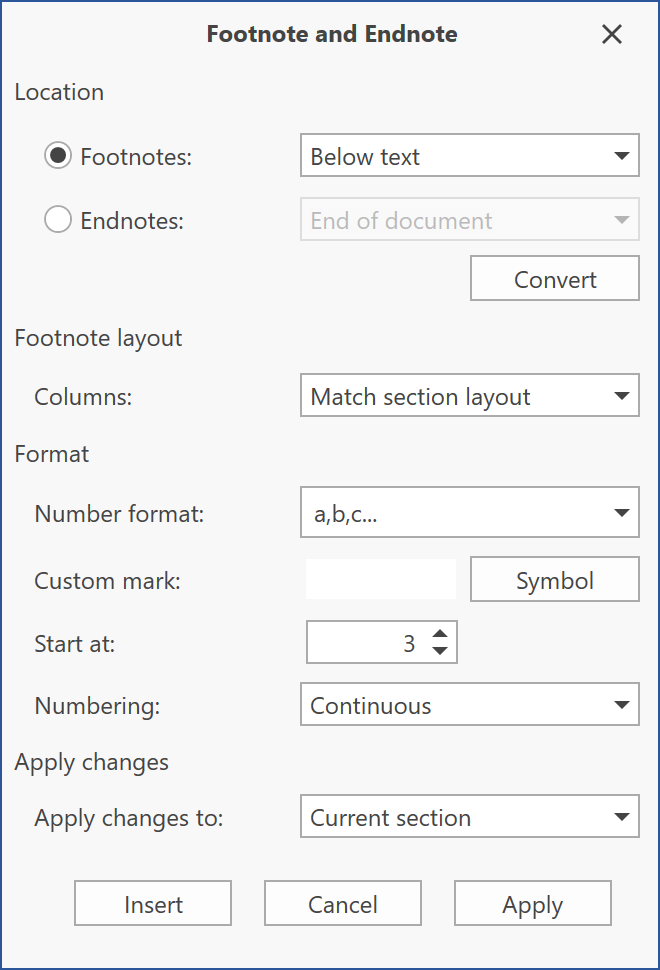

However, if footnotes are frequent, as with academic writing, then sequential numbers are used. If footnotes are rare or inconsistent, they are usually denoted by an asterisk (*) or less commonly the dagger (†).

Footnotes are stacked at the bottom of the page in the order their corresponding signals appear in the text. The only exception is the dash (-), in which case the footnote signal comes before, not after.Īt the bottom of the page, that same signal is written, along with the footnote. Footnote signals should come after punctuation and at the end of sentences when possible. Within the text, place a footnote signal directly after the passage that the footnote relates to.

The information in footnotes is always supplemental, or “extra.” That means if you have something necessary to say in your writing, put it in the text, not in a footnote.
Displaying a source citation (depending on the style guide).įootnotes are also used for displaying legal disclaimers or copyright information, especially in advertisements. Sharing additional information or personal commentary about a passage in the text. In most written works, footnotes provide two main services in a text: These superscript figures in text correspond to a small note at the bottom of the page, known as a footnote. If you’ve seen a small number or asterisk written near the top of a line in text, chances are it was a footnote. However, it’s up to you to ensure the information they provide is reliable and accurate.Īlways make sure to properly cite your sources to avoid plagiarism.Grammarly helps you communicate confidently Write with Grammarly What are footnotes? Primary sources are often considered the most credible in terms of providing evidence for your argument, as they give you direct evidence of what you are researching. If you use one of these in your research, it is probably a primary source. Some types of source are nearly always primary: works of art and literature, raw statistical data, official documents and records, and personal communications (e.g. Are you directly analyzing the source itself (primary), or only using it for background information (secondary)?. Does the source provide original information (primary), or does it summarize information from other sources (secondary)?.  Was the source created by someone directly involved in the events you’re studying (primary), or by another researcher (secondary)?. To determine if a source is primary or secondary, ask yourself:
Was the source created by someone directly involved in the events you’re studying (primary), or by another researcher (secondary)?. To determine if a source is primary or secondary, ask yourself:








 0 kommentar(er)
0 kommentar(er)
